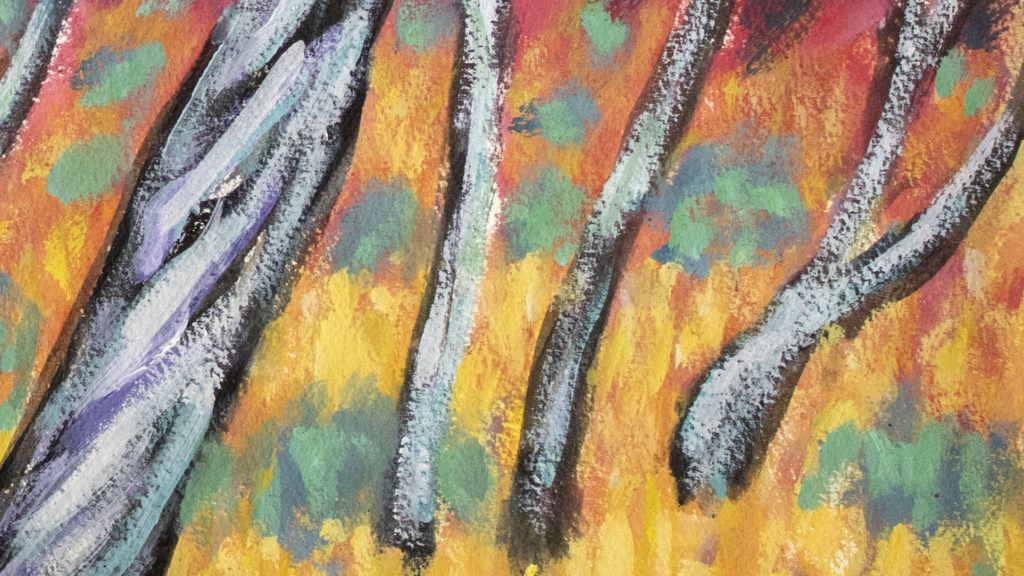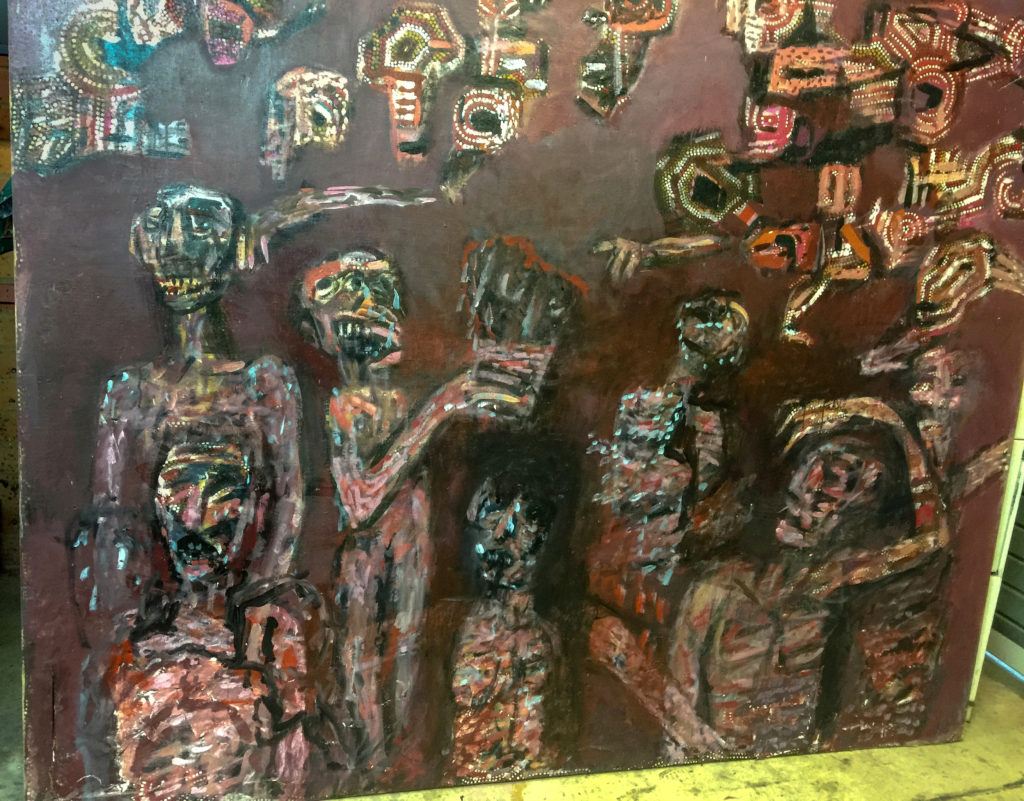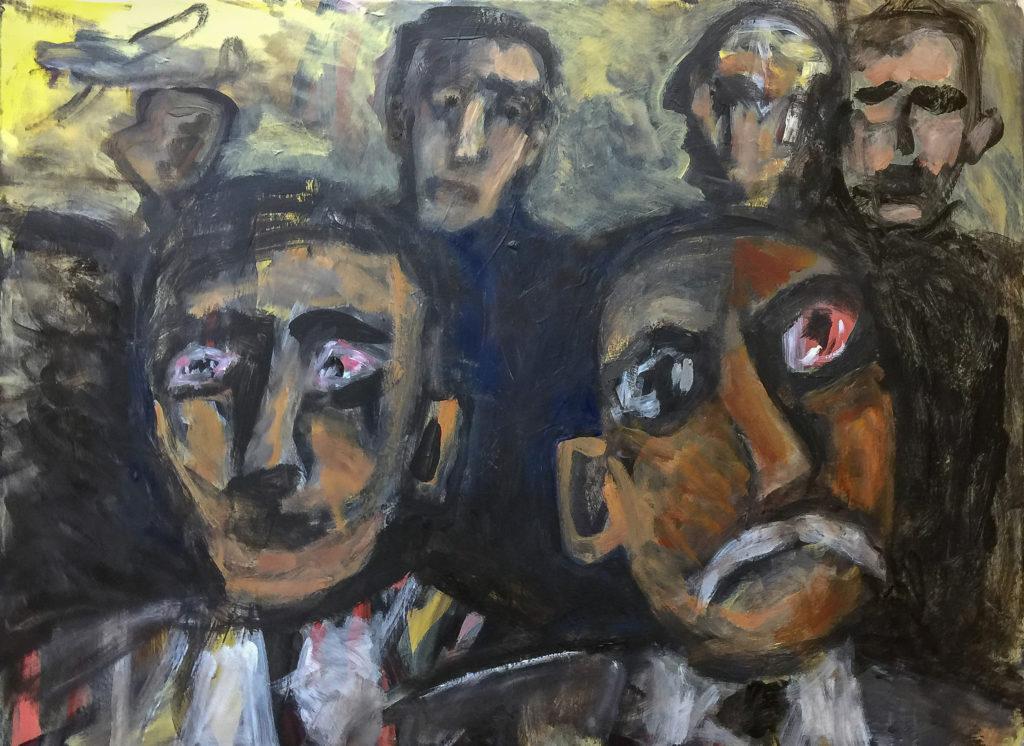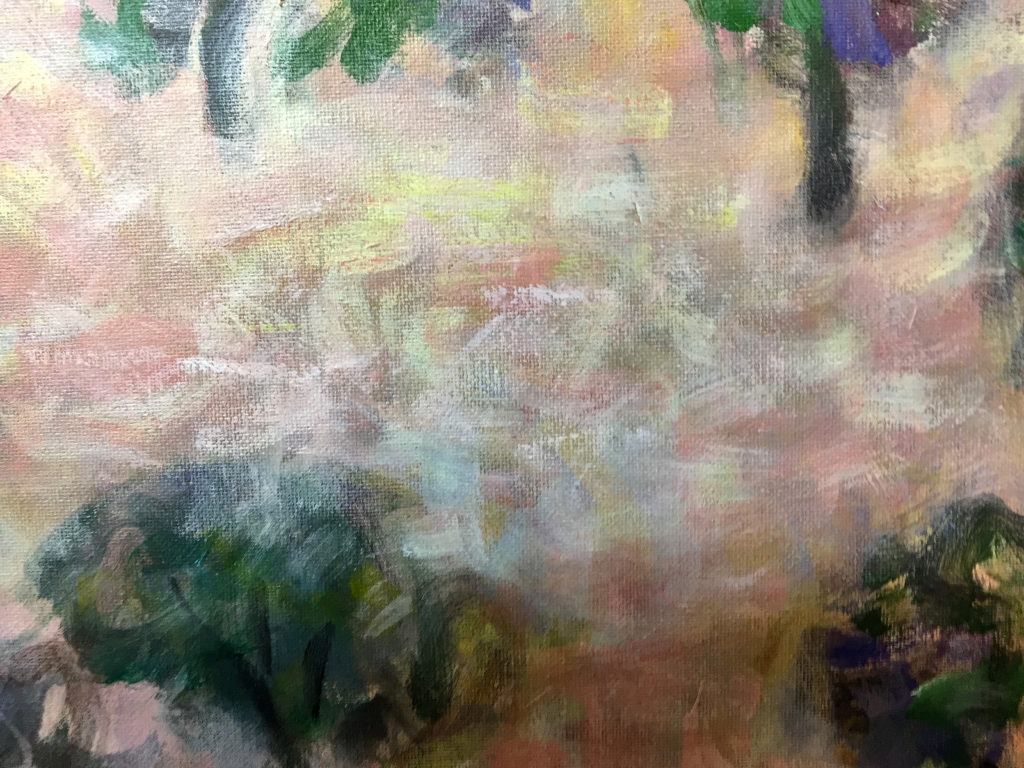(To access past newsletters, please click here.)
NOTES FROM JIM COBB
Practical Approaches To The New Mediums
As featured in Australian Artist Magazine - click to download the article
This month, I am presenting practical approaches to using the new Atelier Mediums. Whether you are in the studio or in the field, you will need to resolve certain problems and often choosing the right medium at the right time will make the process so much easier because you will be able to alter the consistency of the paint to your preferred viscosity.
Dry Edges & A Controlled Painting Experience
Everyone knows that drastic changes can be made when using acrylics. However, when working on big pieces of canvas, dried edges might become a bit of a problem, forcing you to work quickly or recklessly. Obviously, everyone would like to avoid that unwanted experience, and now you can. You just need Atelier Thick Painting Medium or Middle Medium to soften the edges between your dried painting and the fresh paint you are adding (Image 1). You can make these cumulative moves at a controlled speed, yet with the advantage of being able to over paint again without having to wait very long. Every artist who understands the behaviour of oil paints knows that complicated layers of oil paint can end up being problematical and chaotic. But with acrylics, you can use as many layers as you like without worrying about fat over lean theories.
Image 1 - Atelier Thick Painting Medium and Atelier Middle Medium used to integrate green patches
Reusing & Recovering Canvases
This painting has an interesting beginning because I had in my possession an old Aboriginal painting with a lot of circular motives on it, most of which have survived with alterations.
In the top part of the painting, you can see what can be described as the “spirit world” which in this case is represented by the dotted patterns. In the bottom part of the painting the circles eventually become figures, but the dot technique remains as a central part of the composition.
The canvas was very old, and it was disintegrating very badly. For instance, on the left-hand side you can clearly appreciate how the canvas was torn (Image 2). To fix this, the backside of the canvas was layered with cartridge paper and collaged together with Atelier Binder Medium to support the rotted canvas.
Image 2 - Note the large tear along the bottom left of painting
The front bottom left-hand corner was collaged together with Binder Medium too, and the composition changed slightly as can be seen in the next Image with the reworking of the figures on the right (Image 3).
Image 3 - I used the Thick Painting Medium for the thicker paint application in the figurative part of the painting and the smother Middle Medium for the smooth background.
After more work, the overall result is very satisfying and it is difficult to tell that this painting once was an old forgotten canvas now having a new life (Image 4).
Image 4 - Final Painting, "The Spirit World"
Do Not Be Afraid Of Alterations
This painting has a matte black Atelier Free Flow background and the black is also used in the drawing of the figures which are painted with Atelier Interactive and the Thick Painting Medium. This is a good example of a composition benefited by the incorporation of two paints with different characters.
Image 5 - Note the Atelier Free Flow Carbon Black in the background of this painting
I kept working on this painting as you can see in the next image, which is less dramatic than the previous one but not necessarily better (Image 6). Nonetheless it is a good example of using experimentation to discover what the painting has to tell. It's important to note that because I am working with acrylic paints and mediums, alterations are always safe choices. I can always come back and redo the painting until I feel satisfied with the result, so do not be afraid of making changes.
Image 6 - The final painting, Nameless Worried People, after much experimentation, reworking and subtle changes
Texturizing with Heavy Gel Satin
Even though I have already confessed that the Thick Painting Medium is my preferred medium from the Viscosity Ladder, sometimes adding texture to your paintings helps create visually interesting spaces and avoids the monotony of a too smooth surface.
The following close-up is part of a larger painting. During the process of developing this painting I scratched around with Atelier Heavy Gel Satin over the under painting to create some textural interest because the painting was too smooth (Image 7).
Image 7 - Added texture with Heavy Gel Satin
-
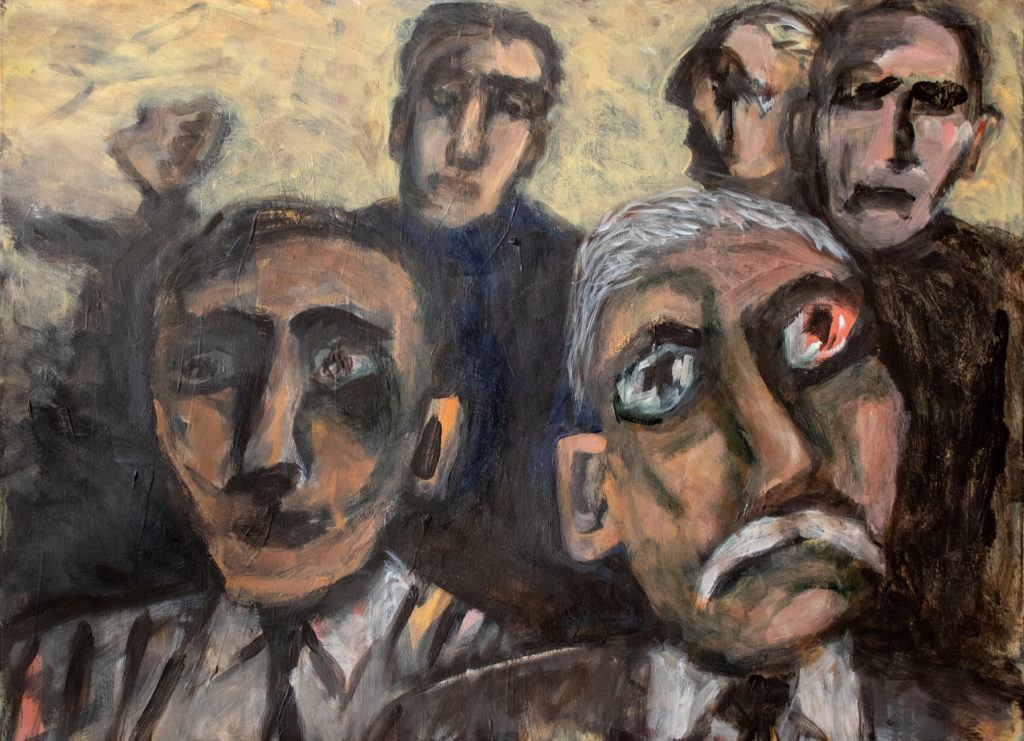
1. Nameless Worried People, 76 by 55.5 cm
Atelier Interactive and mainly Thick Painting Medium on canvas
An example of Thick Painting Medium being used for an overall painterly effect.
-

2. Central Australian Landscape, 76.5 by 57 cm
Atelier Free Flow with Atelier Holding Medium on watercolour paper
Painted from a sketch done on the site in central Australia, Atelier Free Flow used in a gouache technique on watercolour paper. This painting was mostly done with water as the main medium. However the Atelier Holding Medium can be used to accentuate certain areas without losing the overall matte effect, for example in the foreground trees.
-
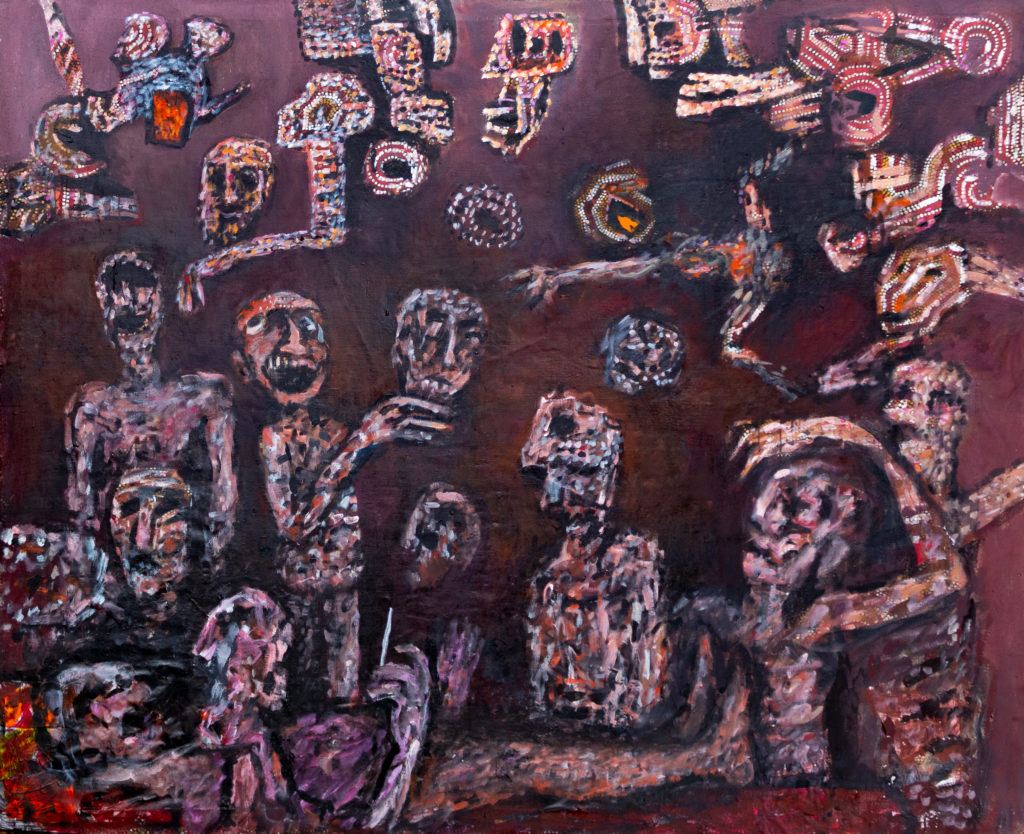
3. The Spirit World, 154.5 by 190 cm
Atelier Interactive with Thick Painting Medium and Middle Medium on canvas
Reused old canvas modifying the composition by using Thick Painting Medium and Middle Medium.
-
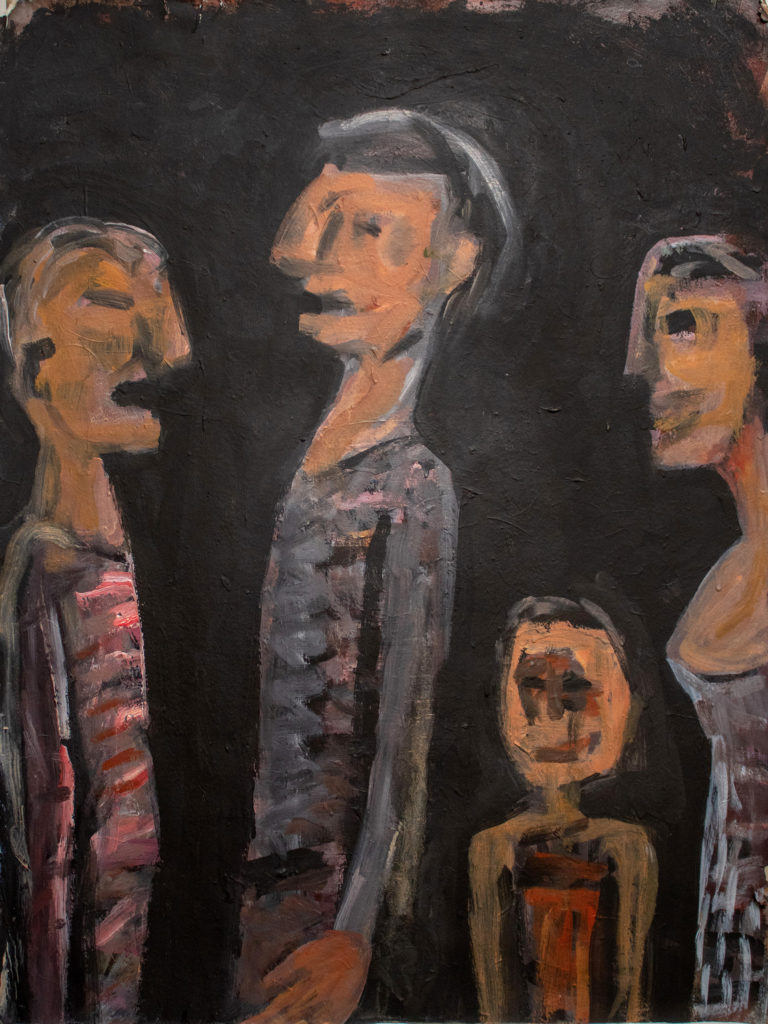
4. Serious People, 76 x 58 cm
Atelier Free Flow, Atelier Interactive and Thick Painting Medium on card
Atelier Free Flow on the background, Atelier Interactive for the figures with Thick Painting Medium
-

5. Landscape with Trees, 75 x 55 cm
Atelier Interactive and Thick Painting Medium on watercolor paper, repainted on top of an old sketch
This painting was done with Atelier Interactive on watercolour paper at a location in north Queensland and it was a little bit disappointing.I decided to rework it in the studio using the new Thick Painting Medium, which gave it a more complex look. It is now starting to have the appearance of an oil painting.
-
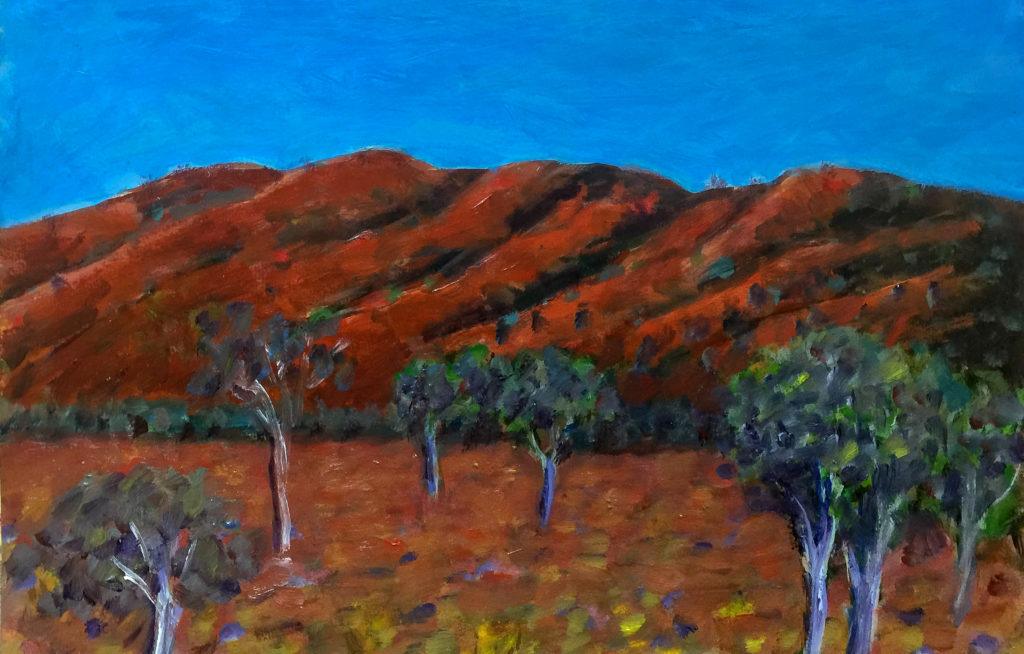
6. Desert Landscape, 54.5 x 190 cm
Atelier Interactive with Thick Painting Medium on watercolour paper
A new landscape with a new composition, painted on top of a sketch made on watercolour paper using Atelier Interactive with the Thick Painting Medium. I have already confessed that the Thick Painting Medium is my favorite of the new mediums.
-
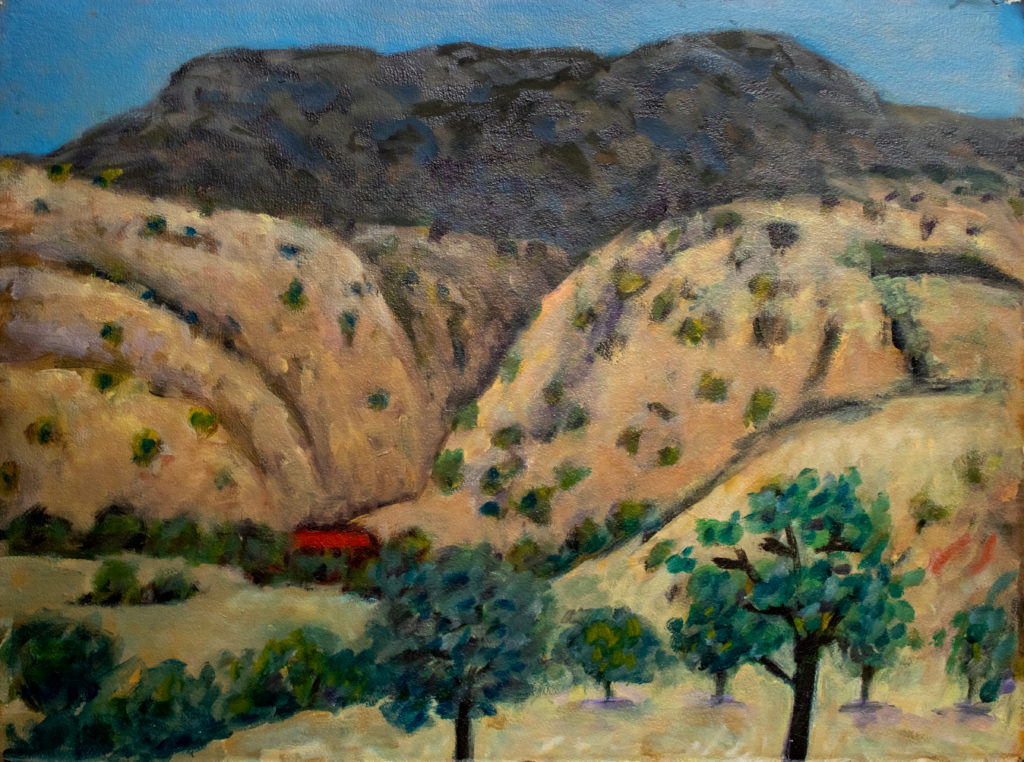
7. Childhood, 76.5 x 57 cm
Atelier Interactive with Thick Painting Medium on canvas
Landscape mainly using Thick Painting Medium with Atelier Interactive. The Thick Painting Medium makes it possible to modulate the tones and forms in the painting.
-

8. Figure Painting, 101.5 x 76 cm
Atelier Interactive with Thick Painting Medium on canvas
-
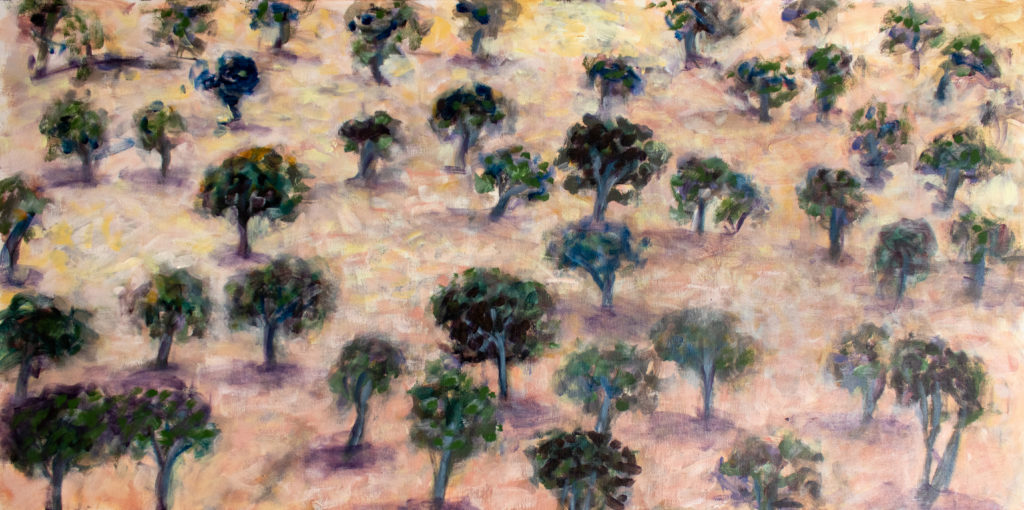
9. Desert with Trees, 60.5 x 121.5 cm
Atelier Interactive with Heavy Gel Satin and Thick Painting Medium on canvas
Painting made using Heavy Gel Satin to liven up the areas of ground between the trees. The trees were painted thinly at first and then emphasized with the Thick Painting Medium.
Share Your Artwork With Us
We would love to share your mages on our different social media networks in order to create a community of artists. If you use Atelier Interactive, Atelier Free Flow, A2, Jo Sonja or any of the new Mediums, please let us know! Email us at: marketing@chromaonline.com.

